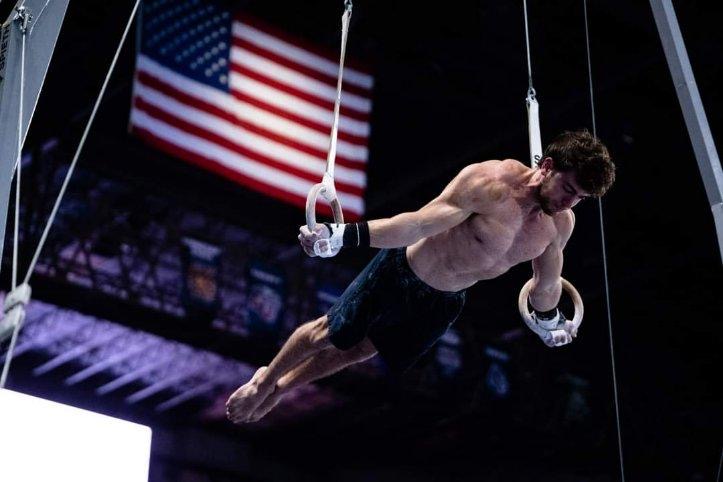1
Shoulder Impingement/Subacromial Impingement
Shoulder Impingement/
Subacromial Impingement
Epidemiology: Rotator cuff (shoulder) impingement affects slightly older athletes (16 and above) but may occur in younger athletes too. Subacromial impingement is the most common cause of shoulder pain (44-65% of shoulder disorders) as reported by OrthoBullets©.
Mechanism of Injury/Description: Inflammation occurs in the front of the shoulder causing bursitis (inflammation of the bursa) where the AC joint and supraspinatus tendon meet and this leads to shoulder impingement.
Signs/Symptoms: Gymnasts who have shoulder impingement report pain in the front or top of the shoulder (AC joint), and pain with overhead skills.
Diagnosis: Impingement is determined by physical examination (positive Neer and Hawkins tests). An MRI will show if there is inflammation at the AC joint, bursitis, and can also help determine if there is a rotator cuff tear.
Treatment: Treatment shoulder impingement includes rest, anti-inflammatory medication (NSAIDs), physical therapy, and possible injection. If this fails, sometimes surgical intervention is needed.
Prevention: Posture correction, and periscapular and rotator cuff strengthening can help prevent impingement.
Gymnastics Medical Provider PEARLS: Shoulder impingement can be associated with shoulder instability, hook-shaped acromion, os acromiale, posterior capsular contracture, tuberosity fracture malunion, and scapular dyskinesia.
Gymnast, Parent, and Coach PEARLS: Focus on good posture of your gymnasts to help prevent shoulder injuries. Be sure your gymnast can lift his/her arms by his/her ears without arching from their back.
2
Rotator Cuff Tear
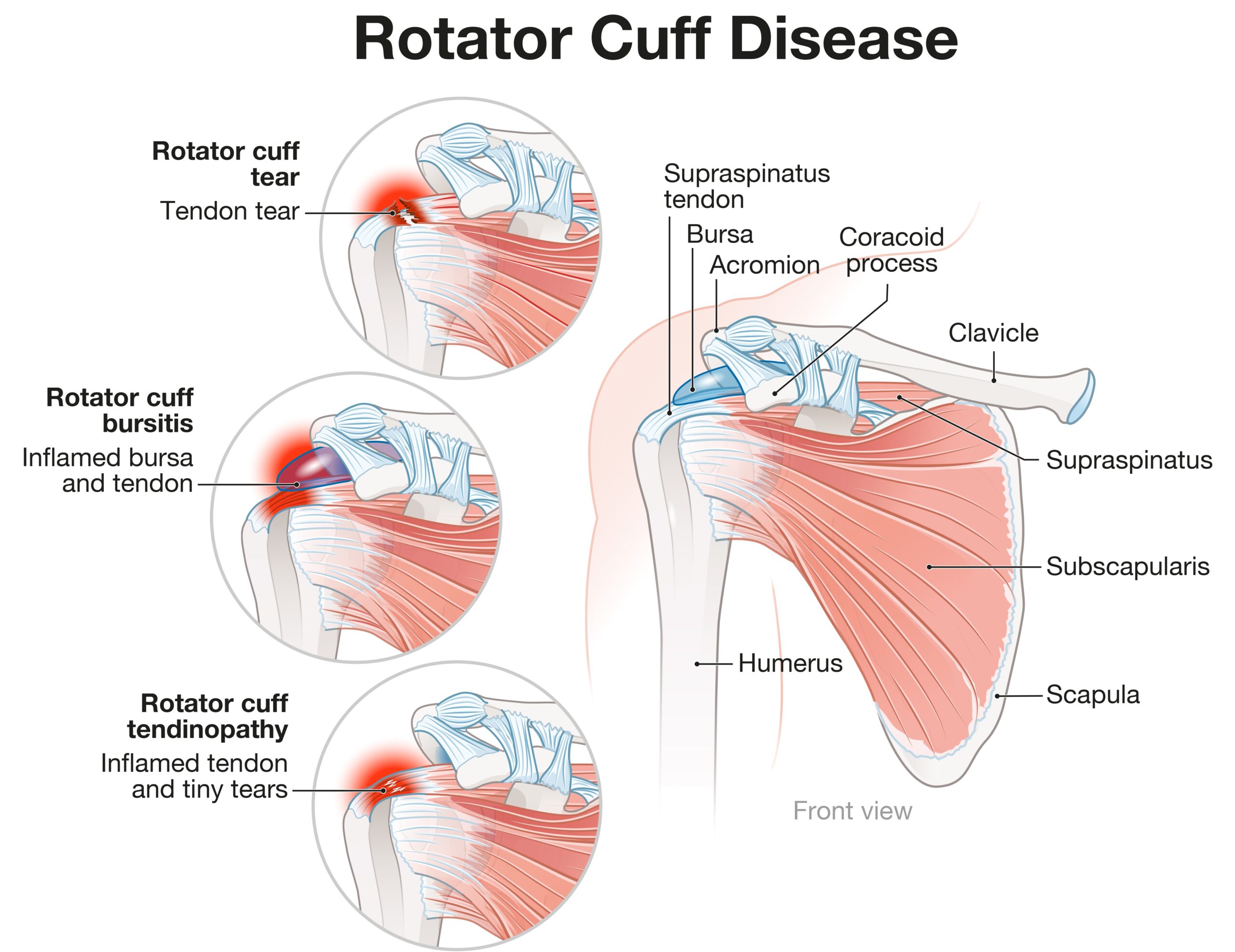
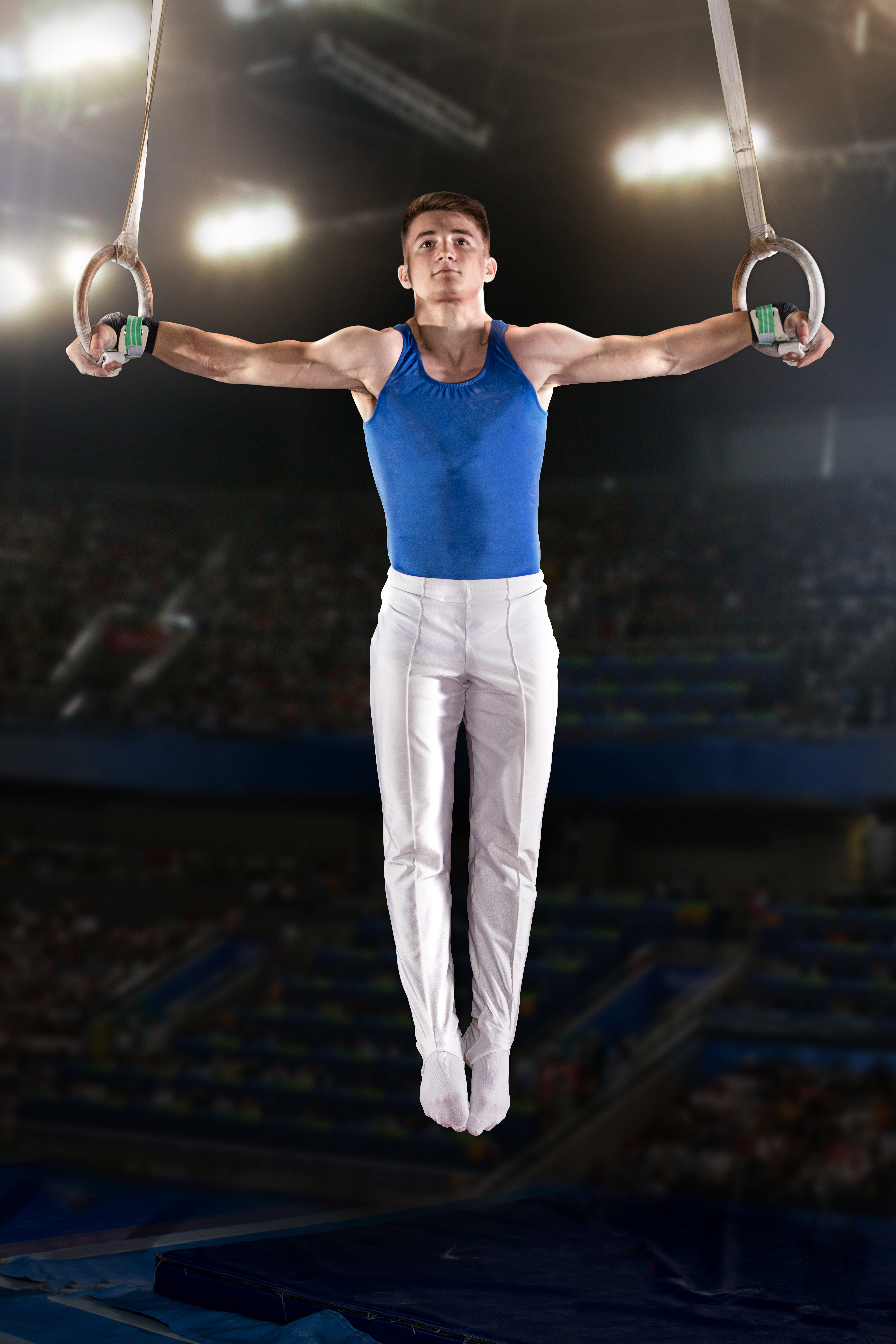
Epidemiology: The condition usually occurs in older gymnasts at the collegiate level.
Mechanism of Injury/Description: There are four rotator cuff muscles (supraspinatous, infraspinatous, teres minor and subscapularis), and of these, the supraspinatus muscle is the most commonly injured. This injury is usually brought on by repeated overhead activity and also has been associated with shoulder impingement (see above).
Signs/Symptoms: The gymnast will most likely have pain in the deltoid muscle or outer region of the shoulder and pain at night/the end of the practice. The gymnast will also explain that he/she has pain with any overhead activities.
Diagnosis: A physical examination, including an Empty Can Test (and many other special tests-see below), can help determine the diagnosis. Your Medical Provider may also order an MRI or Ultrasound to confirm a rotator cuff tear.
Treatment: Your Medical Provider may advise you to rest, prescribe anti-inflammatory medications (NSAIDs), an injection, and physical therapy. A complete rotator cuff tear typically requires surgery.
Prevention: Posture correction can help prevent this type of injury. Strengthening your periscapular and rotator cuff can also help athletes avoid a rotator cuff tear.
Gymnastics Medical Provider PEARLS: Shoulder exams can be complex, please see the table below to help with your examination of testing specific rotator cuff muscles:
| Rotator Cuff Muscle | Muscle Function | Special Test |
|---|---|---|
| Supraspinatus | Abduction of the shoulder | Empty Can or Jobe Test |
| Infraspinatus | External rotation of the shoulder | Elbow at 90 by the side and RROM of external rotation |
| Teres minor | External rotation of the shoulder | Hornblowers Test |
| Subscapularis | Internal rotation of the shoulder | Lift off Test |
Gymnast, Parent, and Coach PEARLS: Rotator cuff tears more commonly occur in older gymnasts and also appear to be more common in male gymnasts due to the increased number of upper body gymnastics specific events.
2
Rotator Cuff Tear

Epidemiology: The condition usually occurs in older gymnasts at the collegiate level.
Mechanism of Injury/Description: There are four rotator cuff muscles (supraspinatous, infraspinatous, teres minor and subscapularis), and of these, the supraspinatus muscle is the most commonly injured. This injury is usually brought on by repeated overhead activity and also has been associated with shoulder impingement (see above).
Signs/Symptoms: The gymnast will most likely have pain in the deltoid muscle or outer region of the shoulder and pain at night/the end of the practice. The gymnast will also explain that he/she has pain with any overhead activities.
Diagnosis: A physical examination, including an Empty Can Test (and many other special tests-see below), can help determine the diagnosis. Your Medical Provider may also order an MRI or Ultrasound to confirm a rotator cuff tear.
Treatment: Your Medical Provider may advise you to rest, prescribe anti-inflammatory medications (NSAIDs), an injection, and physical therapy. A complete rotator cuff tear typically requires surgery.
Prevention: Posture correction can help prevent this type of injury. Strengthening your periscapular and rotator cuff can also help athletes avoid a rotator cuff tear.
Gymnastics Medical Provider PEARLS: Shoulder exams can be complex, please see the table below to help with your examination of testing specific rotator cuff muscles:
| Rotator Cuff Muscle | Muscle Function | Special Test |
|---|---|---|
| Supraspinatus | Abduction of the shoulder | Empty Can or Jobe Test |
| Infraspinatus | External rotation of the shoulder | Elbow at 90 by the side and RROM of external rotation |
| Teres minor | External rotation of the shoulder | Hornblowers Test |
| Subscapularis | Internal rotation of the shoulder | Lift off Test |
Gymnast, Parent, and Coach PEARLS: Rotator cuff tears more commonly occur in older gymnasts and also appear to be more common in male gymnasts due to the increased number of upper body gymnastics specific events.
3
Labral Tears
Epidemiology: This injury typically occurs in athletes with “loose” or hypermobile shoulders or a shoulder that has been dislocated (“popped out of place”) and usually in the dominant arm.
Mechanism of Injury/Description: The gymnast can experience a partial dislocation (shoulder subluxation) or a complete shoulder dislocation (the shoulder completely “pops out” or comes out of the shoulder socket) which can lead to a labral tear. Labrum tears can also occur from a fall on an outstretched arm with tensed biceps or from traction on the arm.
Signs/Symptoms: The most common symptom associated with this condition is intense pain in the shoulder area and possibly feeling like the shoulder will (or did) “pop out of place.” Gymnasts may also describe a feeling of “looseness” or mechanical symptoms (catching or locking).
Diagnosis: A physical exam, including an O’Brien’s test, can help determine if an athlete has a labral tear. Your Medical Provider will likely order an MRI to confirm a labral tear.
Treatment: Similar to rotator cuff tears, surgical intervention is often necessary for labral tears. However, rest, anti-inflammatory medications, injections, and physical therapy can also help in recovery.
Prevention: Posture correction can help prevent this type of injury. Strengthening your periscapular and shoulder area can also help athletes avoid labrum tears.
Gymnastics Medical Provider PEARLS: SLAP lesion stand for a Superior Labrum from Anterior to Posterior tear) are more common in athletes. Consider evaluating the gymnast for posterior cuff tightness to see if they are instead loading the labrum while performing/practicing gymnastics skills.
Gymnast, Parent, and Coach PEARLS: Gymnasts who have a shoulder dislocation before the age of 20 have an 80-90% chance of dislocating again and thus if a dislocation occurs they should seek medical attention and treatment.
4
Acute Shoulder Dislocations & Instability
Epidemiology: Shoulder dislocations can occur at any age, but before the age of 20 you have an 80-90% chance of dislocating again without treatment.
Mechanism of Injury/Description: This injury can result from a fall or landing with your arm out to the side and rotated. In most cases, the shoulder is abducted and externally rotated at the time of the injury, meaning it has gone beyond the regular rotation, thus resulting in a partial dislocation (subluxation) or complete dislocation.
Signs/Symptoms: The gymnast will report pain in the shoulder area and the arm will also look and feel as if it is “out of place.”
Diagnosis: A dislocation is determined by the history and physical exam (positive apprehension test) and an MRI often shows the extent of the injury, including a labrum tear, bone bruising, Hill-Sachs lesion and Bankart lesions).
Treatment: In the case of a true dislocation, the gymnast should seek immediate medical attention for the shoulder to be set back. However, if it is a partial dislocation, also known as a subluxation, the injury may be less severe but does still require the gymnast to be seen by a Medical Provider. Rest, anti-inflammatory medications, and physical therapy are important in the recovery in a subluxation episode. Your Medical Provider will determine if surgical intervention is needed (which is usually the case in true dislocations as this typically causes a labrum tear).
Prevention: To prevent shoulder instability/dislocations focus on posture correction, rotator cuff strengthening, periscapular strengthening, and practice falling safely.
Gymnastics Medical Provider PEARLS: If a shoulder instability episode has occurred, order an MRI to investigate if there is a labrum tear, cartilage injury, bony Bankart, Hill Sachs Deformity, and other injuries from the episode. Traumatic anterior shoulder instability/dislocations are sometimes referred to as TUBS (Traumatic Unilateral dislocations with a Bankart lesion requiring Surgery).
Gymnast, Parent, and Coach PEARLS: Gymnasts who have a shoulder dislocation before the age of 20 have an 80-90% chance of dislocating again and thus if a dislocation occurs they should seek medical attention and treatment.
![shoulder impingement -shutterstock_1791366260 (1) [Converted]](https://gymnasticsmedicinemens.org/wp-content/uploads/2023/05/shoulder-impingement-shutterstock_1791366260-1-Converted-scaled.jpg)
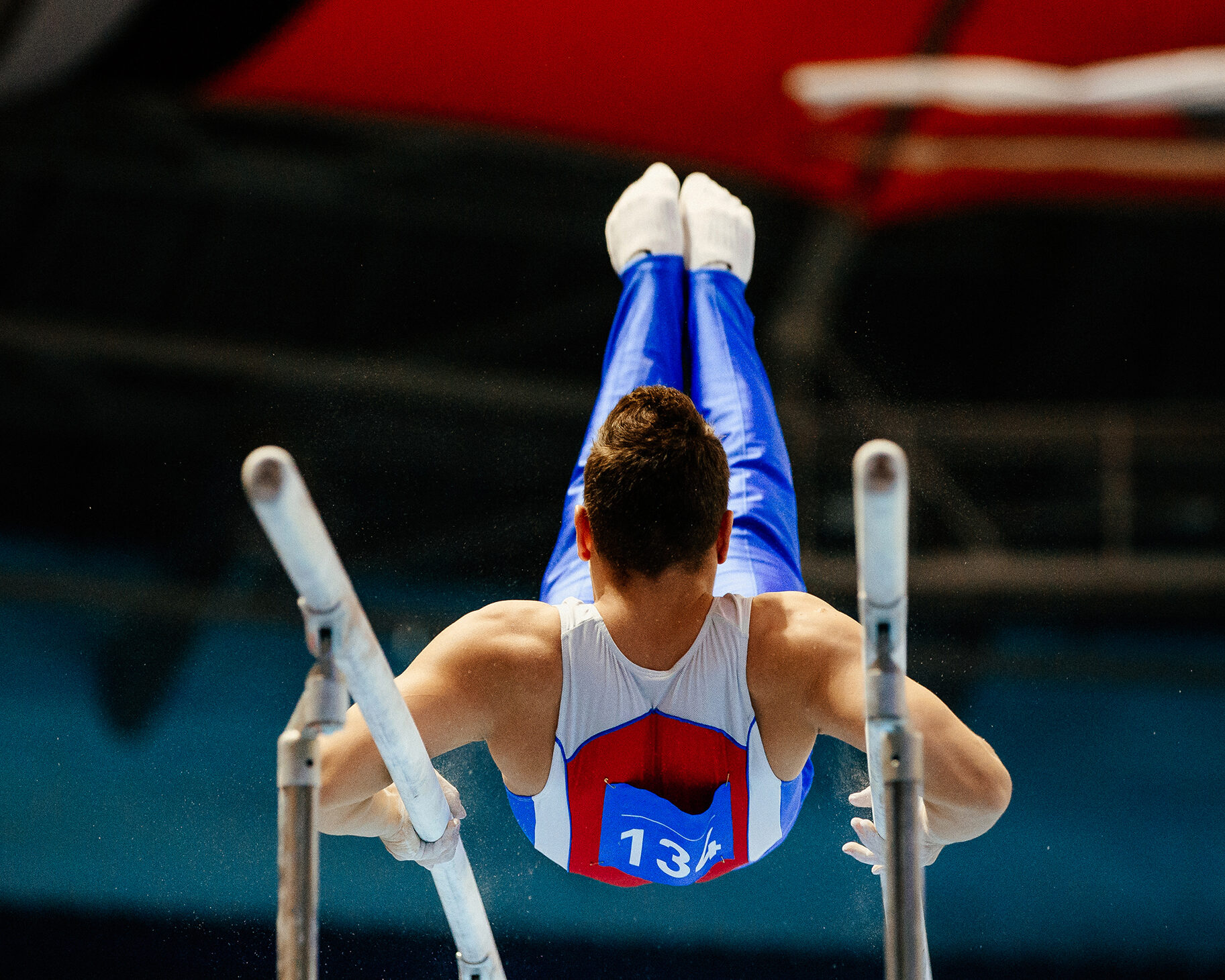
![labral tear – shutterstock_2151906279 [Converted]](https://gymnasticsmedicinemens.org/wp-content/uploads/2023/05/labral-tear-shutterstock_2151906279-Converted-scaled.jpg)
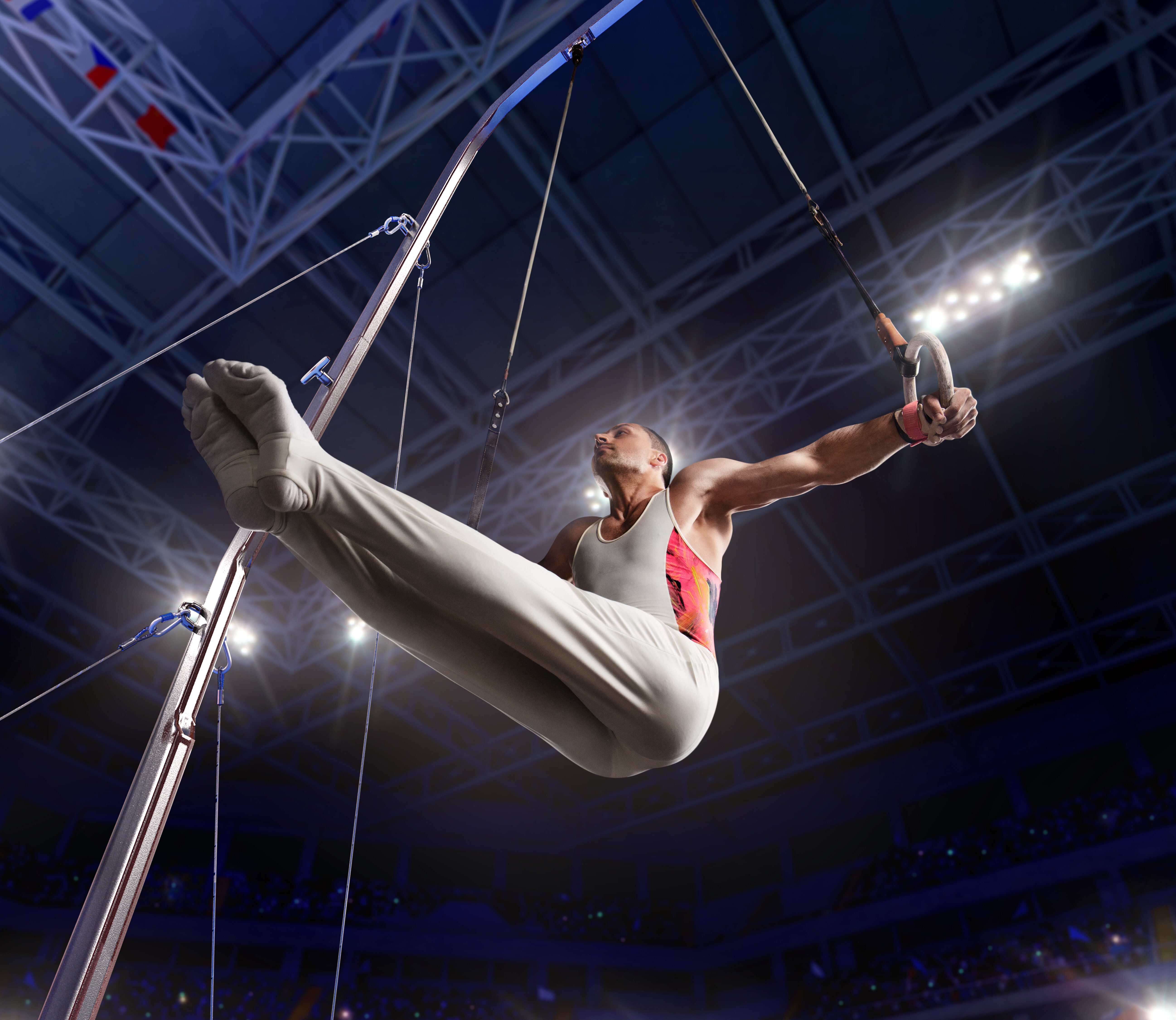
![shoulder dislocation – shutterstock_121818628 [Converted]](https://gymnasticsmedicinemens.org/wp-content/uploads/2023/05/shoulder-dislocation-shutterstock_121818628-Converted.jpg)
